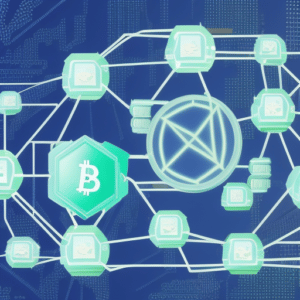Web3 is a new technology that has several pros and cons. Some people think it will revolutionize the Internet by making it more democratic, secure, private, and transparent. Other people think Web3 is all hype and point to the many disadvantages of this technology.
In this article, we will discuss the five major pros and cons of Web3.
The Web3 Research Institute is reader-supported. When you buy through links on this site, we may earn a commission at no cost to you.
The 5 Pros of Web3
Web3 technology has many advantages over the current version of the Internet. Here are the five biggest pros of using Web3.
1. People can own their data.
A big advantage of Web3 is that it allows people have control over their personal information. This is important because, up until now, big tech companies have been controlling people’s data. These companies have been censoring what people can say online and using people’s data for advertising purposes. With Web3, people can take back control of their data and choose how companies use it.
2. People can stay anonymous.
An appealing aspect of Web3 is that it allows people to remain anonymous online. People can use Web3 technology to communicate and make transactions without revealing their personal information. This can protect people from identity theft and fraud. It can also help promote free speech and open communication.
3. Web3 is secure and private.
Web3 is a secure way to store data. This is because it is decentralized, meaning that no single entity controls it. Instead, data are spread out across many different computers. This decentralization makes it very difficult for hackers to get access to data.
In addition, Web3 uses encryption to protect data. This means that people cannot see private information if they do not have the right key.
4. Web3 is transparent.
Another advantage of Web3 is that transactions are transparent and accessible to everyone. This is because data are stored on a blockchain, so people cannot change or delete any records.
5. Web3 makes the web more democratic.
Web3 is more democratic than the current web. This is because blockchain technology, which powers Web3, allows people to communicate directly without the need for intermediaries.
In addition, because Web3 is decentralized, it is more resistant to censorship and manipulation. This allows everyone to have a voice.
The 5 Cons of Web3
Although Web3 has several pros, there are also cons. Here are the five biggest disadvantages with Web3.
1. Web3 has significant security vulnerabilities.
Although Web3 offers some security and privacy features, hackers have already found ways to exploit vulnerabilities in Web3-based applications. Third parties have also been able to access data using Web3 technologies.
However, it is important to note that Web3 is still in its early stages of development. With time and further development, these issues might be resolved.
2. A few businesses dominate Web3 today.
Some people think Web3 will just move power from a few big tech companies to a few well-funded startups. This is because some startups already have a lot of data and capital, giving them a significant advantage over smaller rivals. These startups play an outsized role in today’s Web3 ecosystem, leading some to worry about the concentration of power in their hands.
While it remains to be seen whether these concerns are justified, Web3 may not lead to the evenly distributed utopia that some had hoped for.
3. Some people cannot afford to use Web3.
Another disadvantage of Web3 is that people need tokens to use Web3 platforms. These tokens can be expensive, and prices will only increase as demand increases. This could lead to a two-tiered system where people who can afford to buy tokens have access to a company’s platform, while those who cannot afford to buy tokens do not have access. It could also create a significant barrier to entry for many people, especially those in developing countries.
4. Most Web3 websites are not user-friendly.
Web3 has a lot of disadvantages when it comes to user experience. Although it is a great tool for developers and power users, Web3 is not yet suitable for mainstream users.
Most blockchains are very slow and inefficient today, with some transactions taking hours to be confirmed. Many cryptocurrency exchanges are too complicated for the average person to use. And concepts like decentralized autonomous organizations and non-fungible tokens are extremely difficult for most people to understand.
5. Blockchain technology consumes a lot of energy.
One disadvantage of Web3 is how much energy some blockchains need to work. Most blockchains today require a network of computers to verify transactions. This takes a lot of energy.
For example, the two most popular cryptocurrencies, Bitcoin and Ethereum, consume as much energy as countries like Ireland and Qatar. This is a major problem because it contributes to climate change and puts a strain on the electrical grid. It also means that blockchain technology is not sustainable in the long run.
Web3 may be the future of the Internet, but it needs to find a way to address its energy consumption problem.
Related Articles

The 55 Best Web3 Certifications in 2023
Read our list to find the best Web3 certification that can help increase your chances of advancing in this exciting field!

The 35 Best Web3 Grants in 2023
To help Web3 professionals keep up with the latest trends and technologies, we’ve compiled a list of 35 grants that are currently available.

The 104 Best Crypto White Papers
If you’re looking for the best crypto white papers, look no further! In this roundup, you’ll find our 104 top picks of the year.
